Picture this: You’re standing in a sprawling park where free-roaming deer casually stroll past temples older than most European cities, and suddenly one approaches you with a polite bow. This isn’t a fairy tale—it’s everyday reality in Nara, Japan’s first permanent capital. Nara was the capital of Japan from 710 to 784 and in 2010 Nara celebrated the 1,300th anniversary of its ascension as Japan’s imperial capital.
In this comprehensive guide, you’ll discover how to experience Nara’s magical blend of ancient spirituality and adorable wildlife, budget like a pro, and avoid common tourist mistakes that could land you in trouble with a 550-ton Buddha statue or an overeager deer.
Why Nara Should Be Your Next Japan Adventure
Nara is home to eight temples, shrines, and ruins which collectively form the Historic Monuments of Ancient Nara, a UNESCO World Heritage Site since 1998. But here’s what sets it apart from other historic destinations: where else can you feed sacred messengers of the gods while standing in the shadow of the world’s largest wooden building?
Unlike the crowds of Kyoto or the urban intensity of Tokyo, Nara offers an intimate encounter with Japan’s spiritual heart. The 1,200 deer that call Nara home have therefore become a symbol of the city and are considered a “natural treasure.” These aren’t just any deer—they’re descendants of animals believed to carry divine messages, and they’ve learned something remarkable: how to bow for food.
Getting to Nara: Transportation That Won’t Break the Bank
From Major Cities
From Osaka (45 minutes, most budget-friendly):
- Take the Yamatoji Line from either JR Namba Station or Tennoji Station to JR Nara Station. The trip takes 30 to 45 minutes one-way
- Cost: Approximately ¥560 ($4) one way
- Covered by JR Pass if you have one
From Kyoto (50 minutes):
- Kintetsu Line: Faster and more convenient, arrives at Kintetsu Nara Station (closer to attractions)
- Cost: Around ¥760 ($5.50) one way
Pro Budget Tip: Within cities, Japan is remarkably affordable. Most places are walkable, and when needed, subway rides typically cost just ¥100-300 ($0.75-2) per trip.
Getting Around Nara
From the JR station, Nara Park is about a 15-20 minute walk up Sanjodori Street. From the Kintetsu station, it’s about a 5 minute walk. For those preferring public transport, city buses connect major attractions for ¥210 ($1.50) per ride.
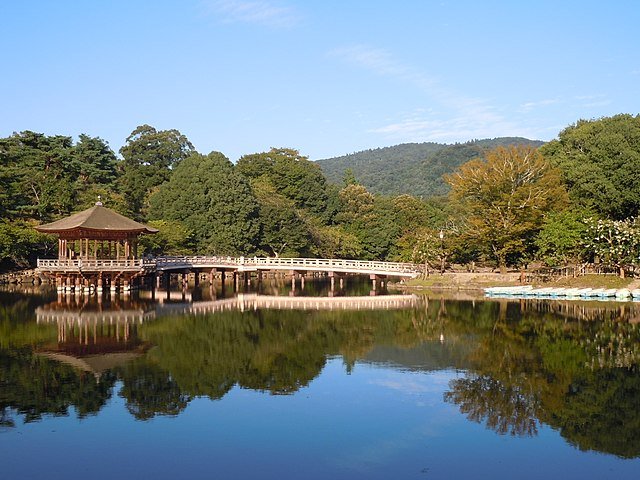
Nara Park: Your Gateway to Ancient Japan
The Legendary Deer Experience
According to legend a mythological god, Takemikazuchi, arrived in Nara on a white deer to guard the newly built capital of Heijokyo. Ever since then the deer have been seen as heavenly animals protecting the city and the country.
The Bowing Phenomenon These aren’t ordinary wild animals. These deer are so popular that they have become a symbol of the city, and a big reason why visitors flock to Nara Park. The deer have learned to bow their heads as a polite request for shika senbei (deer crackers), creating one of Japan’s most charming interactions.
How to Feed the Deer Safely:
- Buy official deer crackers only: shika senbei, special crackers for deer that are sold for around 200 yen (about $1.50 for 10 crackers)
- Use the bowing technique: To ask the deer to bow its head, hold the cracker slightly overhead. They sometimes would also bow when we’d put it behind our back.
- Show empty hands when done: When you run out of crackers, show the deer your empty hands so they know the food is gone.
Critical Safety Warnings
Seasonal Aggression: During the September to November mating season, male deer (bucks) may become aggressive toward both each other and people. Also, Stay away from female deer during reproductive season particularly May and June, and male deer in mating season particulary from July to November. They tend to have violent tempers.
Safety Rules:
- Do not touch baby deer. Mother deer might attack.
- Do not feed them other food (sweets, bread, vegetables, leftovers, etc.) harms their health and can cause accidents
- If you find yourself mobbed by deer, pass your shika senbei off to a friend or group member or conceal them where the deer can’t see them
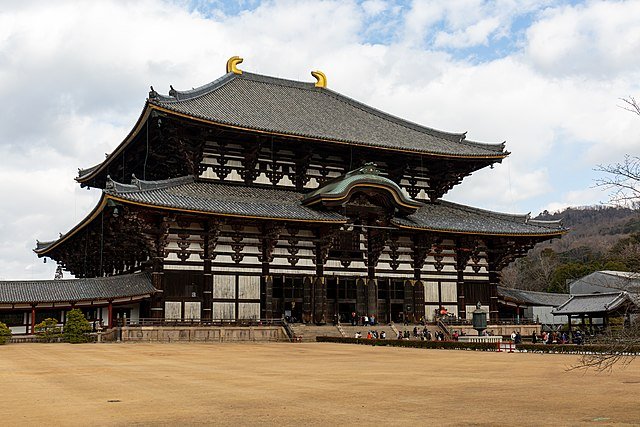
Todai-ji Temple: Standing Before the Colossal Buddha
The Great Buddha Hall (Daibutsuden)
Todaiji Temple stands as one of the world’s largest wooden structures and is designated as a UNESCO World Heritage Site. Inside sits something truly awe-inspiring: The Great Buddha is 14.98 meters tall. Even its ears are 2.54 meters in length and weighs approximately 550 tons.
What Makes It Special: Wishing for happiness for all, it took a total of roughly 2.6 million people to come together and create the Great Buddha statue in 752 CE. This wasn’t just construction—it was a nationwide spiritual endeavor.
Essential Visit Information
Hours & Admission:
- Todai-ji Temple’s hours are as follows: 7:30 am-5:30 pm (April-October), 8:00 am-5:00 pm (November-March)
- Admission to Todai-ji Temple costs ¥800 for Daibutsuden Hall, or ¥1200 if you also want to visit the museum (about $6-9)
Insider Secret: Look for the pillar with a hole at the base behind the Buddha statue. Children who can squeeze through the hole are thought to be future recipients of enlightenment. However, this may be temporarily sealed due to safety measures.
Nigatsu-do Hall: The Hidden Gem
Nigatsu-do hall can be found east of the Daibutsu-den hall of Todaiji Temple, and was constructed during the eighth century (although it needed to be rebuilt in 1669). While the stairs are steep, the views of Nara city that can be seen from the balcony are a great reward.
Best time to visit: Early evening when the lanterns and the city lights begin to glow as the sun begins to set.
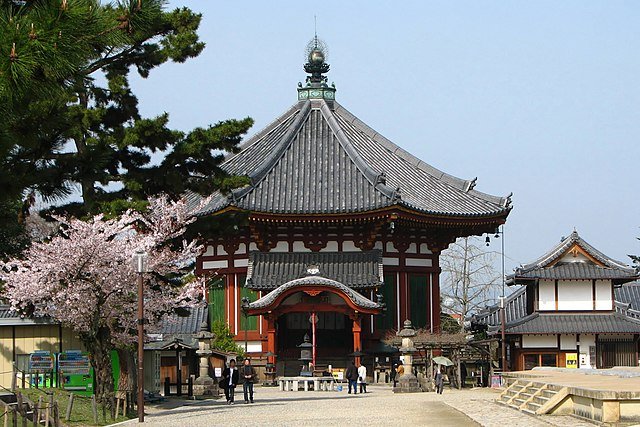
Other Must-See Attractions in Nara Park
Kasuga Taisha Shrine
This shrine complex features thousands of stone and bronze lanterns lining the pathways. Kasuga Taisha is open daily from 6:30 am-5:30 pm (March-October) and 7:00 am-5:00 pm (November-February). The offering hall can be visited free of charge, but to see the inner area/main sanctuary you have to pay ¥700.
Kofuku-ji Temple
This Buddhist temple was founded in 669 and is one of Nara’s eight historic monuments inscribed on UNESCO’s World Heritage List. Its five-story pagoda is the second highest in Japan, at 50.1 metres and serves as an iconic symbol of Nara.
Budget Breakdown: What Nara Really Costs in 2025
Daily Budget Estimates
Budget Traveler: Budget travelers to Nara often spend around $69 per day.
Mid-Range Traveler: If you have a bit more money to spend, you should budget around $114 (¥16,361) per day. This average includes a mid-range hotel and more meals in restaurants, along with a higher budget for entertainment and activities.
Luxury Traveler: Luxury travelers should plan to spend around $197 a day which includes higher-end accommodations, restaurants, tours, and activities.
Specific Costs You’ll Encounter
Attractions:
- Nara Park: Free entry
- Deer crackers: ¥200 ($1.50) per pack of 10
- Todai-ji Temple: ¥800 ($6)
- Kasuga Taisha inner sanctuary: ¥700 ($5)
Food: Most meals cost less than ¥1,000 ($7), and the quality at every price point is reportedly exceptional. Convenience store meals start at ¥300-500 ($2-4).
Transportation: Local buses: ¥210 ($1.50) per ride
Money-Saving Strategies
- Stay outside central areas: On average, the cost of living in Nara in 2025 is 29% less than the average cost of living in the United States (USA).
- Pack your own lunch: Many visitors enjoy picnicking in Nara Park while watching the deer
- Visit during shoulder seasons: During summer, the city can get really crowded, and prices go up significantly. To avoid the crowds and save some money, it’s best to visit during the shoulder seasons or low season.
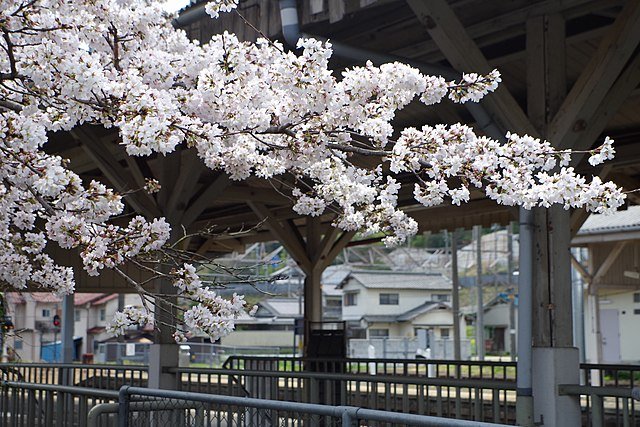
When to Visit: Timing Your Nara Adventure
Peak Cherry Blossom Season (Late March-Early April)
The park transforms into a pink wonderland, but expect crowds and higher prices. The contrast of deer against blooming sakura creates magical photo opportunities.
Autumn Colors (November)
We went in mid-November and it was at its peak. Fewer crowds than spring, with stunning fall foliage complementing the ancient temples.
Summer Considerations
While beautiful, summer brings intense heat, humidity, and the highest tourist numbers. If visiting during this time, start early in the morning.
Winter Appeal
The deer can be seen year round, even in chilly weather. Winter offers the most peaceful experience with fewer tourists and crisp, clear views of the temples.
Where to Stay: Accommodation Options
Traditional Ryokan Experience
For an authentic Japanese experience, consider staying at a ryokan near Kasuga Taisha Shrine. Tsukihitei is located in the Kasugayama Primeval Forest, a UNESCO World Heritage site. Each guest room has a Japanese-style decor and offer panoramic forest views, traditional tatami (woven-straw) floors, and shoji paper screens.
Budget-Friendly Options
There aren’t many hostels in Nara, so if you’re hoping for a budget dorm, it’s best to rethink your plans. Instead, look for inexpensive hotels or an apartment rental.
Day Trip Strategy
Many visitors stay in Osaka or Kyoto and visit Nara as a day trip, which can be more economical and offer better dining options in the evening.
Local Food and Specialties
Unique Nara Delicacies
Kaki-no-hazushi: sushi (usually mackerel or salmon) wrapped in persimmon leaves—a local specialty perfect for takeaway.
Harushika Sake: Harushika brand is produced by one of the oldest existing sake breweries in Japan.
Where to Eat
Most restaurants are located in Downtown Nara or Naramachi, and range from local to international selections. For budget meals, convenience stores offer surprisingly high-quality options starting at ¥300 ($2).
Common Mistakes to Avoid
Deer Interaction Errors
- Never tease the deer: Be sure to immediately reward their good manners with a cracker, as teasing can make them mad.
- Don’t bring food from outside: Do not give them any food other than the special crackers on sale around the park.
- Watch your belongings: Deer may also try to eat plastic bags, maps, pamphlets, or other objects that people hold in their hands
Temple Etiquette
- Remove hats when entering temple buildings
- No flash photography inside the Buddha hall
- Speak quietly and move respectfully through sacred spaces
Planning Your Perfect Nara Day
Recommended Itinerary (6-8 hours)
Morning (9:00-11:00):
- Arrive at Kintetsu Nara Station
- Walk to Nara Park (5 minutes)
- First deer encounter and feeding session
- Visit Kofuku-ji Temple and its pagoda
Late Morning (11:00-12:30):
- Explore Todai-ji Temple and the Great Buddha
- Climb to Nigatsu-do Hall for panoramic views
Afternoon (12:30-14:00):
- Lunch break (try local specialties or convenient konbini food)
- More deer interactions in quieter park areas
Late Afternoon (14:00-16:00):
- Visit Kasuga Taisha Shrine
- Explore the lantern-lined pathways
- Browse souvenir shops
Evening (16:00-17:00):
- Final deer feeding session
- Sunset photography at Nigatsu-do if time permits
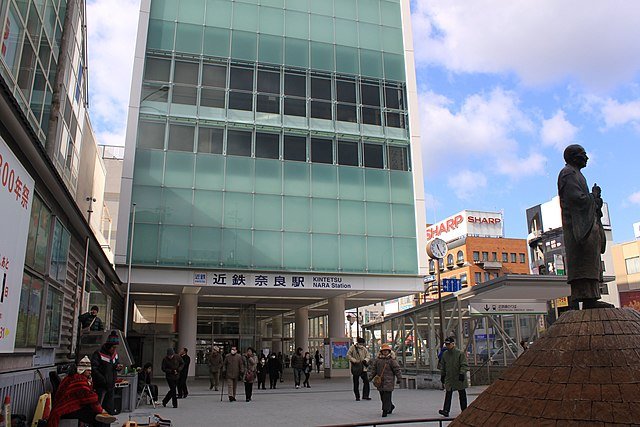
Transportation Back: Ending Your Adventure
Nara Park is open 24 hours a day so you can visit whenever you like. However, most visitors find 6-8 hours sufficient to see the main attractions and have meaningful deer interactions.
For evening return trips, both JR and Kintetsu lines run frequently until late night, making it easy to head back to your base in Osaka or Kyoto.
The Bottom Line: Why Nara Is Worth Every Yen
Nara delivers something increasingly rare in our digital age: genuine magic. Where else can you bow to a deer who bows back, stand before a 1,300-year-old bronze Buddha that required 2.6 million people to create, and walk through temples older than most civilizations—all in a single day and for less than $50?
Feeding the deer in Nara Park turned out to be one of the most fun things we did during our 2 weeks in Japan. It’s this combination of accessibility, affordability, and authentic wonder that makes Nara an essential stop on any Japan itinerary.
Start planning your Nara adventure today. Book accommodations early if visiting during cherry blossom season, download a currency converter app for easy yen calculations, and prepare for one of Japan’s most heartwarming experiences. The deer are waiting to meet you—and they’ve been practicing their bows for over 1,000 years.

